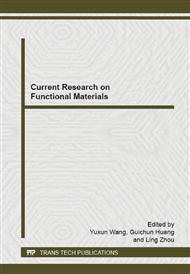p.165
p.173
p.177
p.181
p.185
p.193
p.201
p.208
p.216
Mechanism towards Fluorescence of CdTe Quantum Dots Quenched by Magnetic Iron Oxide Nanoparticles
Abstract:
In this study, fluorescence spectrum and UV-vis absorption spectrum were employed to explore the interactions between magnetic iron oxide nanoparticles modified by citric acid (CA-MION) and CdTe quantum dots modified by thioglycolic acid (TGA-CdTe QDs). Significantly, the mechanism was demonstrated as a dynamic quenching process based on energy transfer. Taken together, these results showed the decreased fluorescence intensity of CdTe QDs implied satisfactory linear relationship with various concentrations of CA-MION ranged from 0.15×10-3 mol·L-1 to 4.5×10-3 mol·L-1. Overall, this study has provided the potential for preparing multimagnetic-fluorescent nanocomposites and further developing quantitative detections of multi-analytes.
Info:
Periodical:
Pages:
185-190
Citation:
Online since:
October 2014
Authors:
Price:
Сopyright:
© 2014 Trans Tech Publications Ltd. All Rights Reserved
Share:
Citation:


